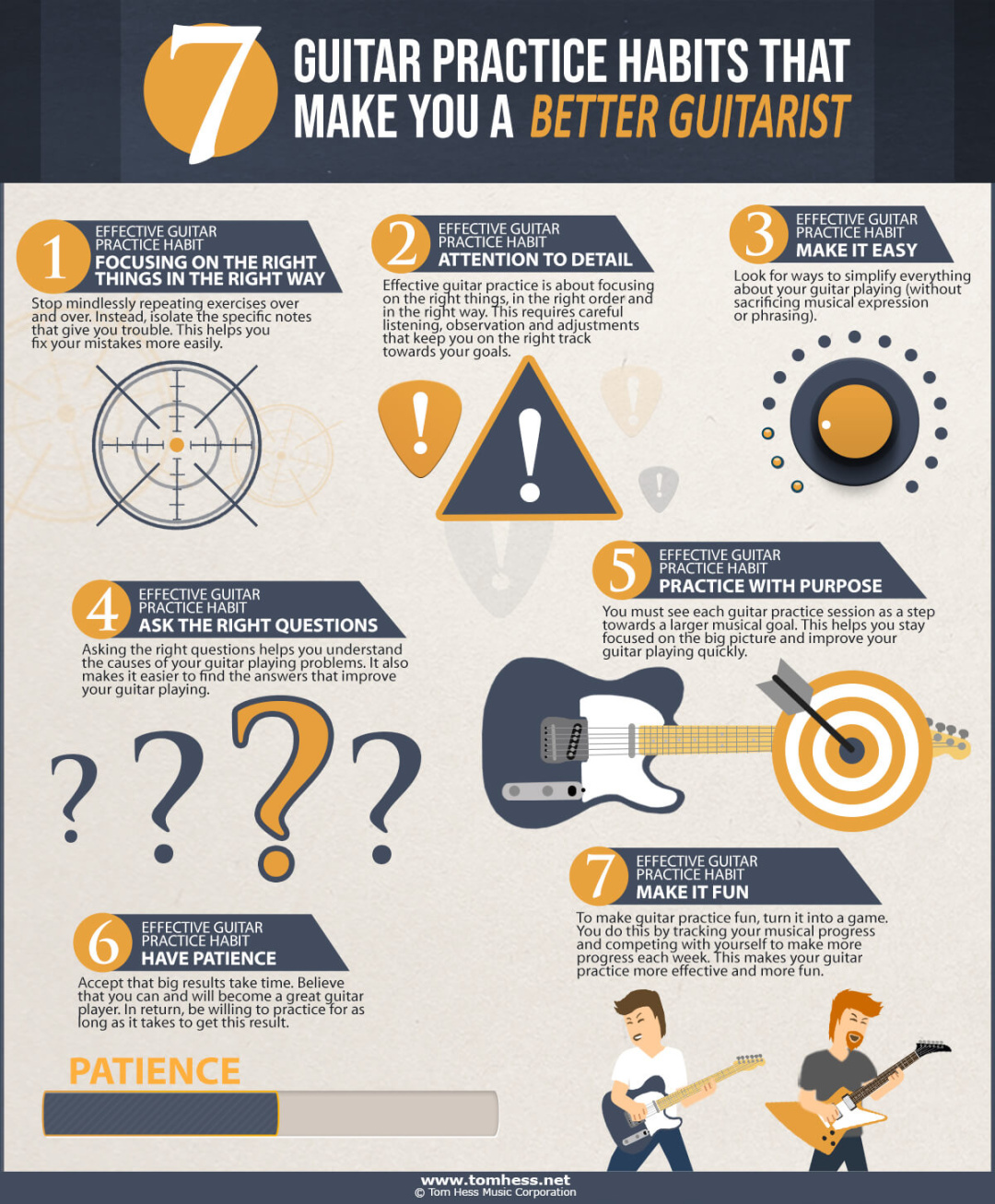—
Crafting Your Guitar Practice Routine: A No-Nonsense Guide
So, you’ve got a guitar. That’s awesome! But now what? Just strumming along to your favorite tunes is fun, sure, but if you’re serious about getting better, you need a practice routine. It’s like working out for your fingers and your musical brain. Don’t worry, it doesn’t have to be a chore. Let’s break down how to build a killer routine that fits your life and your goals.
Setting Realistic Goals: Where Do You Want to Go?
First things first, what do you want to achieve? Are you aiming to shred like a rock god? Maybe you want to play smooth jazz Chords? Or perhaps you just want to be able to strum along to campfire songs? Setting clear, realistic goals is crucial. “I want to be a good guitarist” is too vague. Instead, try “I want to learn all the major and minor chords in three months” or “I want to learn the intro to ‘Stairway to Heaven’ by next month.” Break down big goals into smaller, manageable steps. This keeps you motivated and tracks your progress.
Warm-Ups: Don’t Skip the Stretching

Just like athletes stretch before a game, guitarists need to warm up. Start with some simple finger exercises. Run through scales, chromatic exercises, or simple chord progressions. This gets your fingers moving and prevents injuries. Aim for at least 5-10 minutes of warm-ups before diving into your main practice. Think of it as waking up your muscles. You wouldn’t run a marathon without stretching, would you?
Technique Focus: Clean and Precise
Technique is the foundation of good guitar playing. This includes things like picking, fretting, and hand synchronization. Spend time focusing on clean and precise movements. Use a metronome to keep your timing consistent. Start slow and gradually increase the tempo as you get more comfortable. Work on alternate picking, hammer-ons, pull-offs, and slides. These exercises might seem boring, but they’ll pay off big time in the long run.
Chord Mastery: Building Your Vocabulary
Chords are the building blocks of most songs. Start with the basics: major, minor, and power chords. Then, move on to more complex chords like sevenths, ninths, and diminished chords. Practice changing between chords smoothly and efficiently. Use chord diagrams and online resources to learn new chords. Don’t just memorize them; understand how they’re constructed. This knowledge will help you when you start writing your own music.
Scales and Modes: Exploring the Fretboard
Scales and modes are essential for understanding melody and improvisation. Learn the major and minor scales, and then explore other modes like Dorian, Phrygian, and Mixolydian. Practice playing scales in different positions on the fretboard. This will help you navigate the neck and find new melodic ideas. Jam along to backing tracks and experiment with different scales and modes. This is where your playing starts to get really interesting.
Learning Songs: Putting It All Together
Learning songs is a great way to apply what you’ve learned. Start with songs that are within your skill level. Break down the song into smaller sections and focus on mastering each part. Use online tabs, videos, and tutorials to help you learn. Don’t be afraid to slow down the tempo and practice difficult sections repeatedly. Playing along to your favorite songs is not only fun, but it also helps you develop your ear and timing.
Ear Training: Listen and Learn
Ear training is often overlooked, but it’s a crucial skill for any musician. Start by learning to recognize intervals and chords by ear. Use online ear training exercises and apps to help you develop your listening skills. Try transcribing simple melodies and chord progressions. This will improve your ability to learn songs by ear and improvise.
Rhythm and Timing: Staying in the Pocket
Rhythm is just as important as melody and harmony. Use a metronome to practice your timing. Work on different rhythmic patterns and grooves. Experiment with different time signatures and tempos. Practice playing along to drum tracks and backing tracks. This will help you develop a strong sense of rhythm and groove.
Consistency is Key: The Power of Regular Practice
The most important thing is to practice consistently. Even 15-30 minutes a day is better than a long practice session once a week. Set aside a specific time each day for practice and stick to it. Make it a habit. Find a practice space where you won’t be disturbed. Track your progress and celebrate your achievements. Don’t get discouraged if you don’t see results immediately. It takes time and dedication to become a good guitarist.
Troubleshooting: When You Hit a Wall
Everyone hits a wall at some point. If you’re feeling stuck, try changing up your routine. Learn a new song, explore a different genre, or focus on a different technique. Take breaks and don’t be afraid to ask for help. Find a good teacher or join a local jam session. Remember, practice should be enjoyable. If you’re not having fun, you’re less likely to stick with it.
Conclusion: The Journey of a Thousand Chords Begins With One Strum
Building a solid guitar practice routine is a journey, not a destination. It’s about consistency, dedication, and a love for the instrument. Remember to set realistic goals, focus on technique, and have fun along the way. Don’t be afraid to experiment and find what works best for you. Whether you’re a beginner or an advanced player, a well-structured practice routine will help you reach your musical aspirations. So, grab your guitar, set your metronome, and start strumming. The only limit is your dedication. Happy playing!

